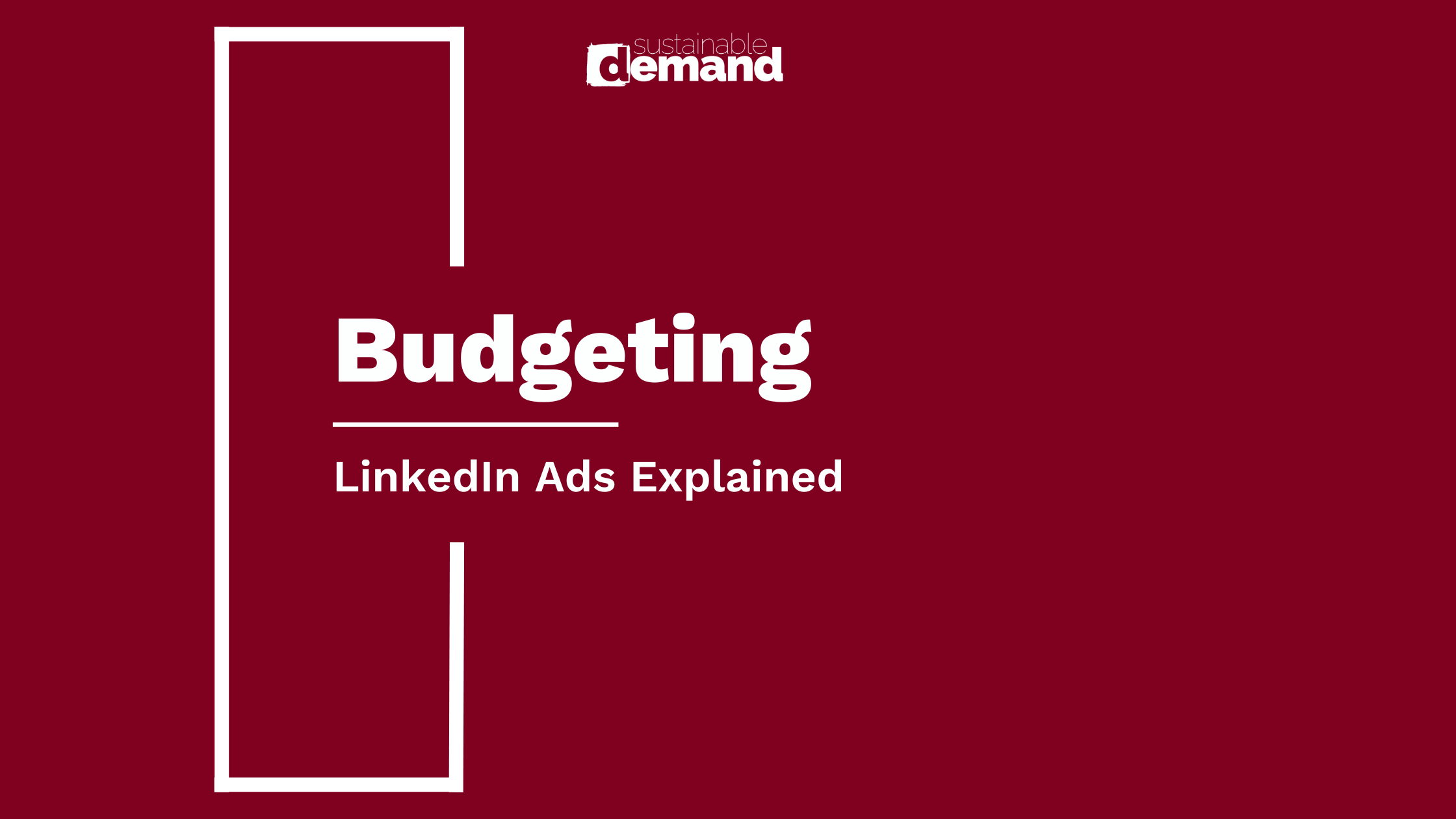LinkedIn Ads | Budgeting

In the realm of online advertising, establishing a well-defined budget is crucial for launching successful campaigns and achieving your marketing objectives. When it comes to LinkedIn Ads, understanding budgeting strategies and best practices empowers you to effectively allocate resources, maximize return on investment (ROI), and ultimately, reach your target audience within the professional sphere. This guide delves into the key aspects of budgeting for LinkedIn Ads, equipping you with the knowledge and strategies to navigate the fiscal landscape and make informed decisions for impactful campaigns.
Understanding Budgeting in LinkedIn Ads:
Budgeting in LinkedIn Ads encompasses two primary aspects:
- Campaign Budget: The total amount you are willing to spend on your advertising efforts over a specific timeframe. This can be set for individual campaigns or allocated across multiple campaigns.
- Bid Strategy: The approach you choose to determine how much you are willing to pay for each click, impression, or conversion on your ads. Common bidding strategies include cost-per-click (CPC), cost-per-thousand impressions (CPM), and cost-per-lead (CPL).
Factors to Consider When Setting Your Budget:
Several factors influence your LinkedIn Ads budget:
- Campaign objectives: Consider your desired outcomes, whether it's generating leads, increasing brand awareness, driving website traffic, or promoting thought leadership content. Different objectives may require different budget allocations.
- Target audience size: The size and complexity of your target audience impact your budget. Reaching a broader audience typically requires a larger budget compared to targeting a niche segment.
- Bidding strategy: The chosen bidding strategy influences your budget allocation. Aggressive bids (e.g., higher CPC) may require a larger budget to secure ad placements, while conservative bids may allow for a smaller budget but potentially lower reach.
- Campaign duration: The length of time your campaign runs impacts your budget. Longer campaigns generally require a larger budget compared to shorter campaigns.
- Competition level: Consider the competitiveness within your target industry or niche. Competitive landscapes may require larger budgets to stand out and secure ad placements.
Approaches to Setting Your Budget:
Several approaches can help you set an appropriate budget for your LinkedIn Ads:
- Percentage of marketing budget: Allocate a specific percentage of your overall marketing budget to LinkedIn Ads, considering other marketing initiatives and their budget requirements.
- Goal-based budgeting: Define your desired campaign outcomes and determine the budget needed to achieve those goals, considering industry benchmarks and average costs associated with your chosen objectives.
- Competitive analysis: Research competitor advertising efforts on LinkedIn to understand their strategies and estimate the potential budget required to be competitive.
- Start small and scale: Begin with a smaller budget for initial campaigns, monitor performance, and gradually scale your budget based on results and positive return on investment.
Strategies for Optimizing Your Budget:
Here are key strategies to optimize your LinkedIn Ads budget and maximize its effectiveness:
- Leverage audience insights: Utilize LinkedIn's audience insights tool to understand your target audience's demographics, interests, and online behavior. This informs targeted ad campaigns with higher potential for engagement, reducing wasted ad spend.
- Utilize A/B testing: Test different ad variations such as headlines, visuals, and calls to action to identify the most effective combinations. This allows you to optimize your ad spend by focusing on elements that resonate most with your audience.
- Monitor and analyze performance: Continuously monitor key metrics like impressions, clicks, website traffic, and conversion rates. Identify underperforming ad sets or campaigns and adjust your budget allocation or bidding strategies accordingly.
- Utilize campaign budget optimization (CBO): Consider utilizing CBO, a feature that automatically allocates your budget across ad sets within a campaign based on their potential for success. This can improve efficiency and potentially increase ROI by focusing on high-performing ad sets.
Actionable Takeaways:
- Develop clear campaign objectives, understand your target audience, and consider competitive factors when setting your budget.
- Utilize a combination of budgeting approaches and consider starting small and scaling up based on performance.
- Leverage audience insights, A/B testing, and continuous performance monitoring to optimize your budget allocation and maximize ROI.
- Explore utilizing CBO to potentially improve efficiency and budget allocation within your campaigns.
By implementing these actionable takeaways, you can transform budgeting from a technical aspect into a strategic advantage within your LinkedIn Ads strategy. Remember, a well-defined budget, informed by data and aligned with your objectives, empowers you to navigate the fiscal landscape of LinkedIn Ads effectively, reach your target audience your desired marketing outcomes within the professional sphere. By mastering the art of budgeting and optimizing your campaigns, you can unlock the full potential of LinkedIn Ads and drive impactful results for your organization.




